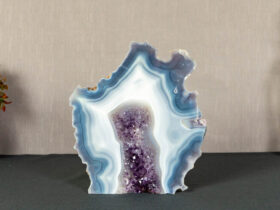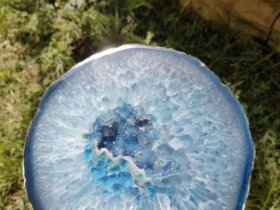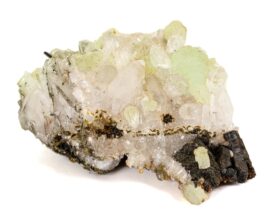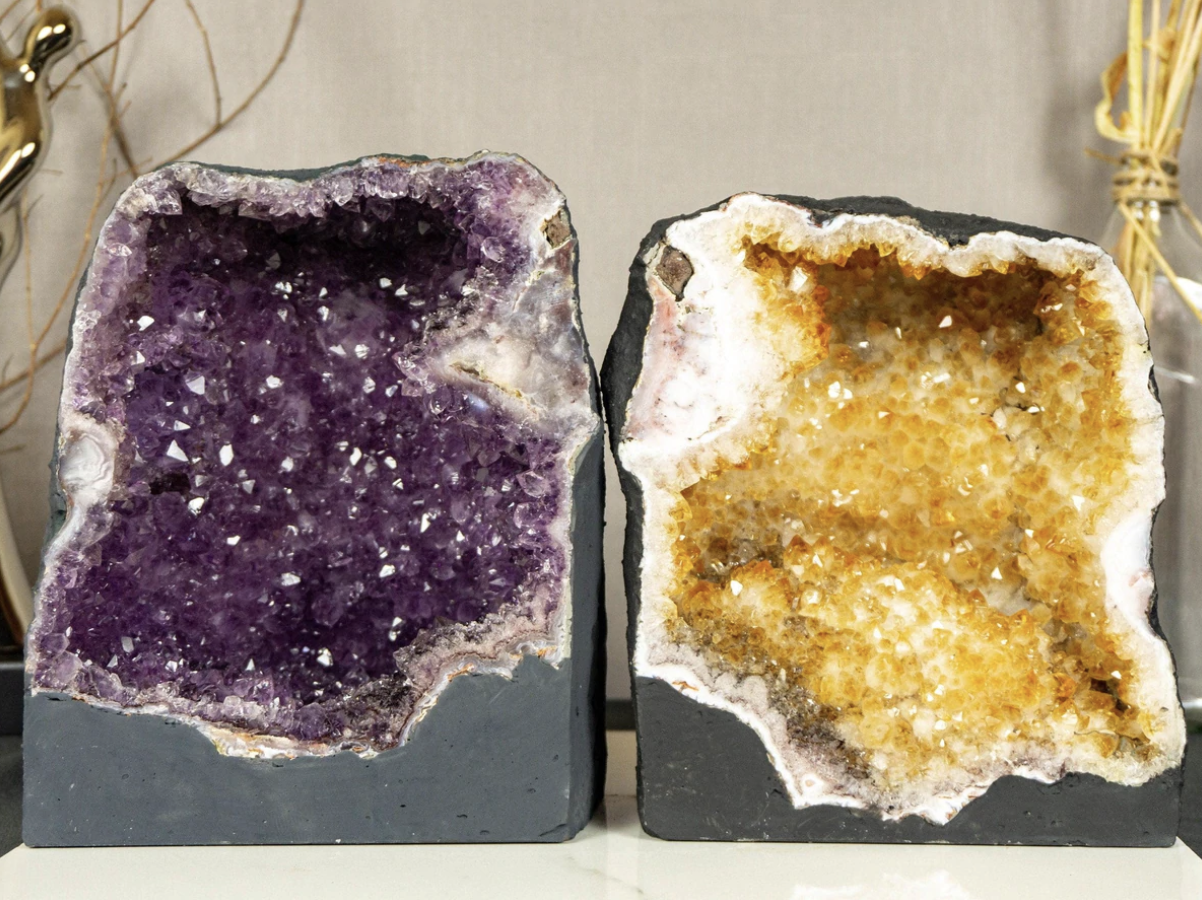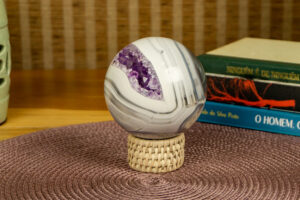Geodes for sale: What is the best way to purchase yours?
Often presenting the form of concentric bands, geodes, or geodes (from Greek, geodes, earthy) are rock formations that occur in volcanic areas and occasionally in sedimentary rocks. They are essentially cavities that form in rocks, being coated by crystalline formations.
The exterior of the most common geodes is usually made up of limestone, while the interior contains quartz crystals or chalcedony deposits. Other geodes are filled with crystals, presenting as a solid mass, and take the name of nodules.
So, it is important to know the geodes for sale, so you know how best to buy yours. Let’s go!
Where do geodes occur?
Geodes can form in any buried cavity. These cavities are typically gas bubbles inside igneous rocks, pockets under the roots of trees, vesicles in lava after a volcanic eruption, or even animal burrows. Over time, the outer wall of the cavity hardens, and dissolved silicates and carbonates are deposited on the interior surface; the slow supply of mineral constituents by groundwater or hydrothermal solutions allows the formation of crystals inside the hollow chamber. Over millions of years after its formation, the geode returns to the surface through current geological processes.
What are the sizes and shapes of geodes for sale?
The size of the crystals, as well as their shape and hue, are variable, making each geode unique. Some are clear like quartz crystals and others contain purple amethyst crystals. Others may contain agate, chalcedony, or jasper. You can’t tell what the inside of a geode is like until it’s cut or broken, to expose its interior.
They are common in some rock formations in the United States, Namibia, Mexico, and especially Brazil.
How do geodes form in nature?
Geodes are created when pockets of air form in hot volcanic rock. Over time, the crystals gradually form as water seeps in and leaks into the air pocket. The minerals contained in the water deposit into the rock and gradually accumulate to create the crystals.
Geode crystals look different depending on where they are formed. The colors of the crystals are mostly determined by the types of minerals present in the water that seeps into the air pockets. Some of the most impressive geodes are found in South America. These geodes have dark purple crystals in the center and are called amethyst geodes.
What is the largest geode in the world?
A gigantic geode was discovered in 1999 in Spain. It was 8 meters long. The crystals inside are white and some reach one meter in length. The hypothesis is that the crystals formed millions of years ago when much of the Mediterranean Sea evaporated and left salt in the air hole of the geode, which eventually became crystals.
Therapeutic effects
The crystals taken from the geodes for sale have the power to harmonize the positive and negative forces that maintain the balance of the universe. It has great healing power and acts according to the color of each type. Tones and invigorates the body helps to awaken and open its interior.
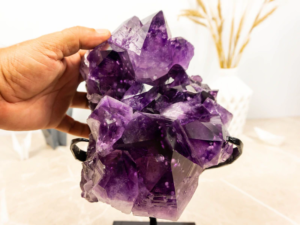
Effects on the body
Lucky Geodes and Water Agate are especially useful in skin diseases, protect against the excessive appearance of freckles and regulate if ported to the neck, failures of the skin pigmentation system. They also prevent scalp diseases. Placed under the pillow, the Lucky Geodes alleviate psychosomatic disorders. The Water Agate is especially suitable for the beauty and healing of the skin. Suitable for: Regenerating forces, beauty, body irradiation, soul sufferings, skin diseases, and emotional background. Skin and face vesicles, facial healing, summer rashes, pigment system, warts, wrinkles, calluses, and abscesses on the skin.
Effects on the psyche
The Lucky Geodes and the Water Agate make everything bad move away from the body of its carrier, preventing it from false friends, They make its carrier feel more satisfied and raise, through its regenerating forces, the beauty, and irradiation of the body. They alleviate spiritual pain and cure skin diseases. They convey self-confidence and the joy of living. In meditation, these stones are highly appreciated due to their gentle fluctuations, which harmonize the soul.
How to identify the types of geodes?
- The crystalline structure of a geode is only visible after all the rock has been sawed in half.
- Make sure that the geode is filled inside, or that it has open spaces with crystals. The open ones are called only “geodes”. Those that are filled are known as “nodular” geodes.
- Analyze the shape of the geode. They are identified by the format as well as by the material contained. The cathedral geodes are narrow and thin, while those with double chambers have two empty spaces within a single half of the geode. Other types of geodes are cubic, barrel, and rhombohedron.
- Analyze the color and quality of the crystals inside your geode. Dark purple crystals indicate an amethyst geode. They are rarer than quartz. These can be white or red on their insides. Geodes that are not filled with quartz or amethyst crystals are usually with calcite. Black calcite is a rare type of geode.
- Compare your geode with photos from a website or reference book. Its ID is visual.
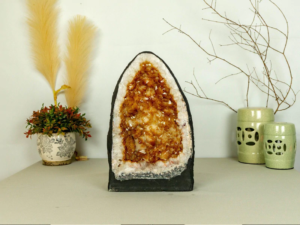
Types of Geodes
The way crystals form and how many are formed differ from geode to geode. Every so often, the crystals are smooth and fill the central space. Other times, the crystals are pointy and rough, and only a part of the central space is covered by them.
From the outside, the geodes resemble ordinary rocks, but when they are broken, they reveal a cavity coated with a layer of agate and filled with crystals. Most geodes are hollow, although the growth of the crystal can fill all its inner volume, and varies in size from 5 to 75 cm in diameter.
The color of a geode depends on the agate layer and the type of crystal inside, which have a wide variety of colors. Most geodes are brown or white: very colored geodes are probably artificially dyed.
Agate Crystal
Most of the color of a geode is provided by the agate layer that surrounds the hollow crystal center. The color of an agate depends on the distribution of various minerals within the stone. Often, this color appears in concentric bands. Different minerals contribute different colors. For example, iron oxides and cobalt create a red color, titanium is blue, nickel, or chromium is green, manganese is pink and copper can make the stone appear red, blue, or green, depending on whether it was combined with other minerals.
Agate geodes are the most popular variety of quartz due to their beauty. For this reason, the agate geodes are not only present in the collections, they are also used for home decoration or in jewelry. Sometimes imitations of agate geodes are deceptive, one should suspect the vivid colors and the bright reds and blues especially.
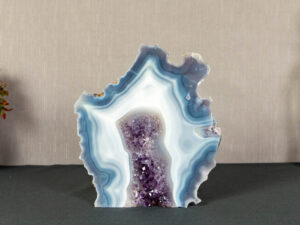
Quartz Crystal
The most common geodes are coated with transparent quartz or white crystals, but they also come in other colors. Amethyst is the name of a purple quartz variety, and these geodes are purple on their interior. Large amethyst geodes are found in Brazil and other South American countries.
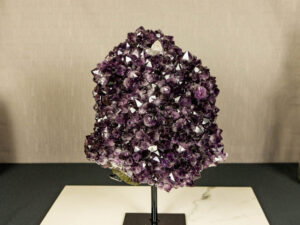
Chalcedony Crystal
Chalcedony is the name of quartz crystals that are too small to be seen with the naked eye. Layers of chalcedony can cover the inner walls of geodes with a variety of colors, including white, gray, blue, yellow, or orange.
The color of the chalcedony that is deposited inside the geode depends on its location. For example, California is well-known for its blue chalcedony.
What to know before buying crystals?
The important thing is to understand that each of them has a different specificity and necessary care, both for the energy field and practical, as a cleaning!
For those who want to guarantee an astonishing piece of decoration in your home and still want to know more about each of these stones, access here.
Free worldwide shipping of E2D Crystals and Minerals!

